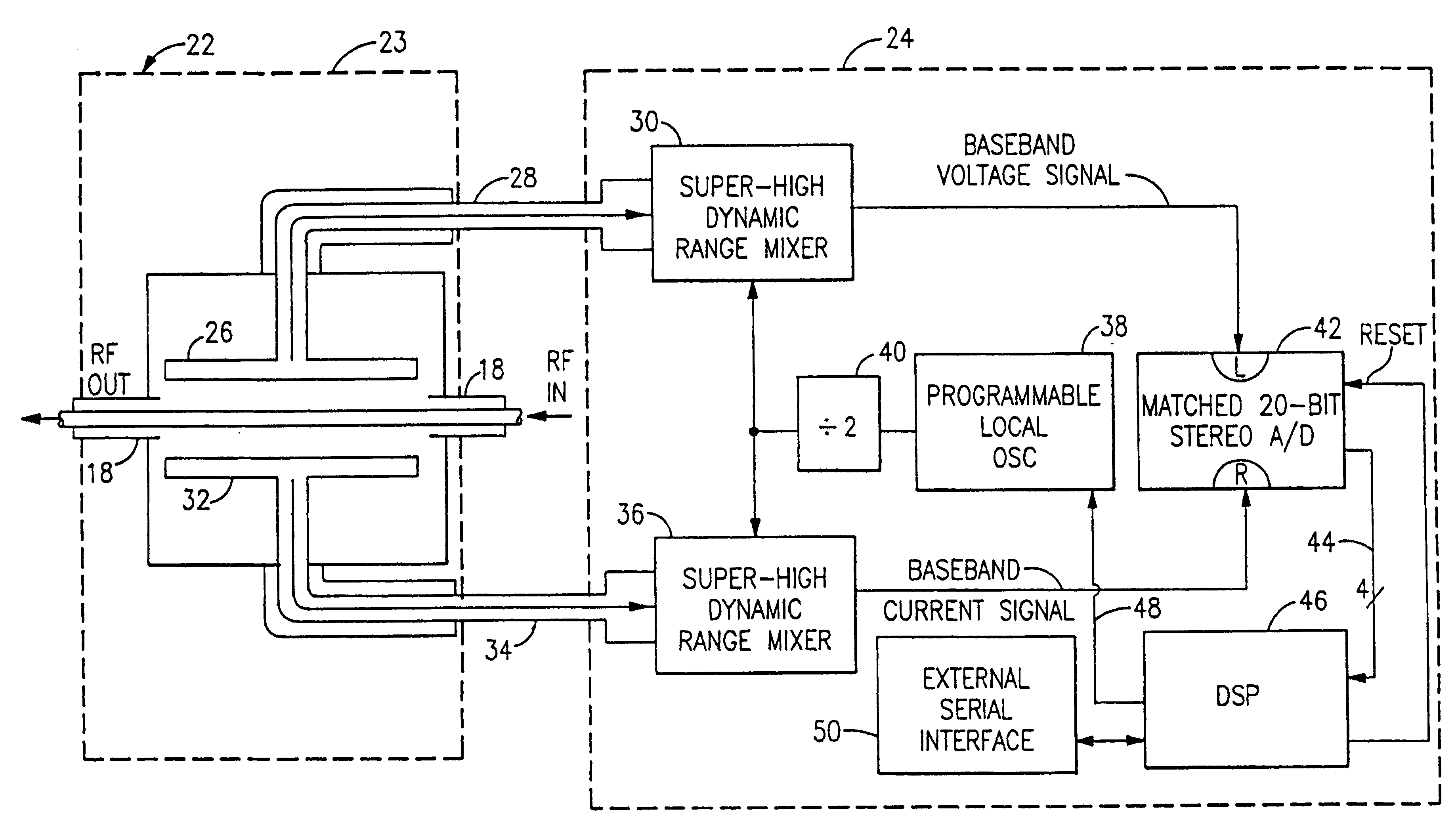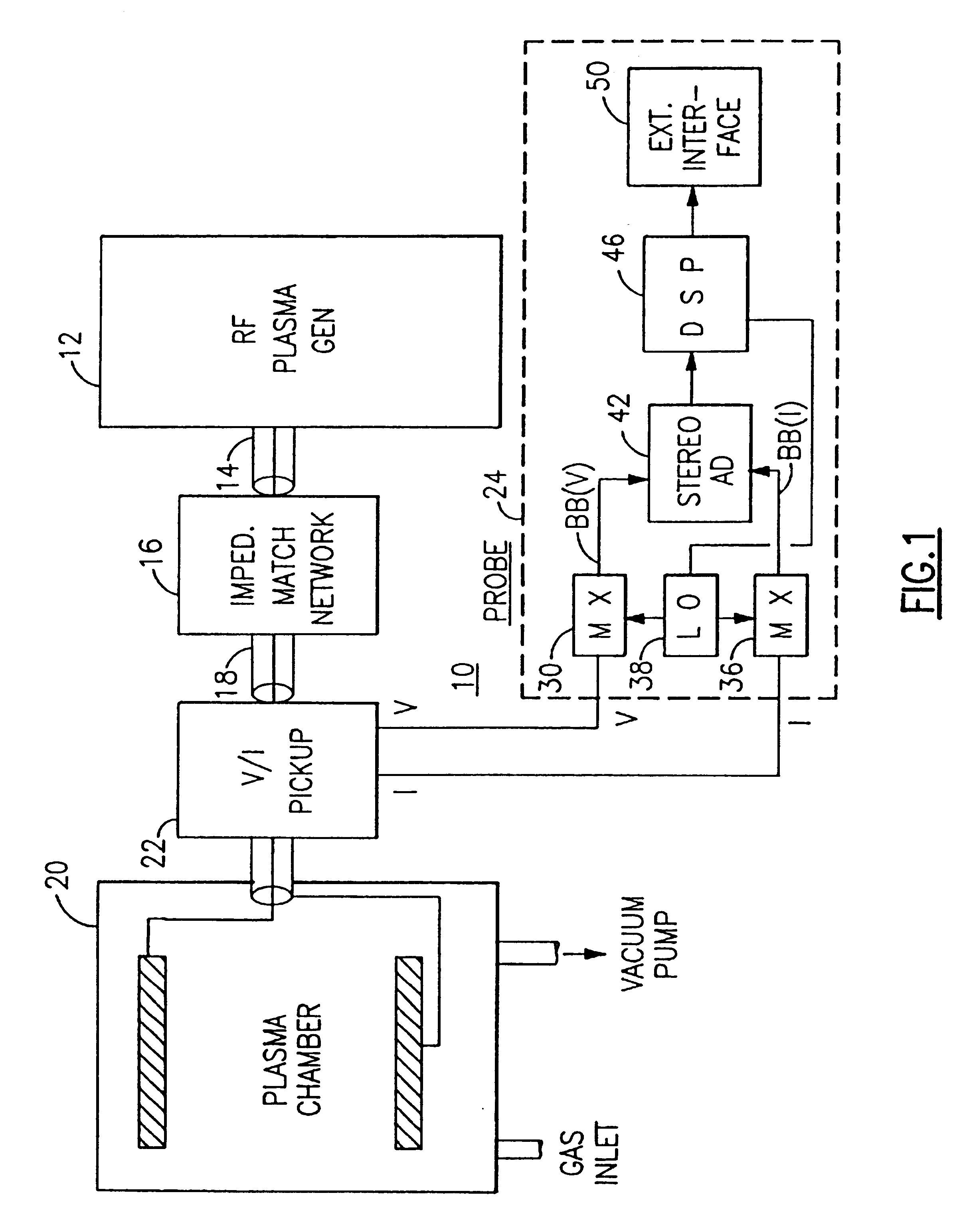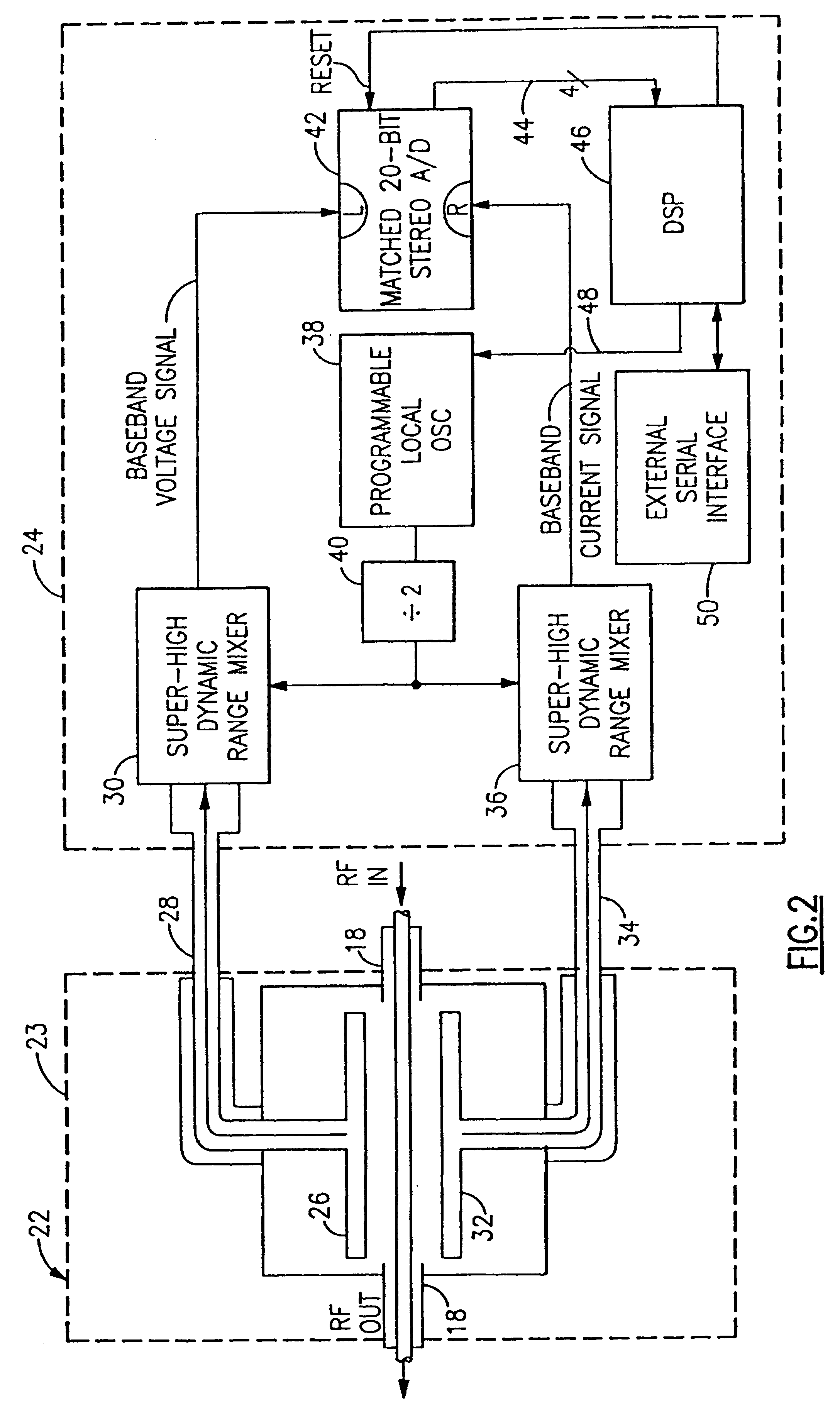Baseband RF voltage-current probe
a voltage-current probe and baseband technology, applied in plasma technique, electric discharge lamps, manufacturing tools, etc., can solve the problems of inability to reach inability to accurately find the phase angle, and inability to meet the output power of the rf generator. to achieve the effect of reliable and accurate, low cost and accurate detection of phase angl
- Summary
- Abstract
- Description
- Claims
- Application Information
AI Technical Summary
Benefits of technology
Problems solved by technology
Method used
Image
Examples
Embodiment Construction
With reference to the Drawing, and initially to FIG. 1, a plasma process arrangement 10, e.g., for etching a silicon wafer or other workpiece, has an RF power generator 12, which produces RF power at a prescribed frequency, e.g., 13.56 MHz at a predetermined power level, such as one kilowatt. The generator 12 supplies RF power along a conduit 14 to a matching network 16. The output of the matching network 16 is coupled by a power conduit 18 to an input of a plasma chamber 20. A probe voltage and current pickup device 22 samples the voltage V.sub.RF and the current I.sub.RF of the applied RF power as it enters the input to the chamber 20. The chamber 20 has a vacuum conduit associated with a not-shown vacuum pump and a gas inlet through which a noble gas, e.g., argon, is introduced into the chamber. The sampled voltage and current V.sub.RF and I.sub.RF are fed to a voltage and current (V-I) baseband probe arrangement 24 which measures the magnitudes or amplitudes of the applied volta...
PUM
| Property | Measurement | Unit |
|---|---|---|
| frequency | aaaaa | aaaaa |
| sampling conversion frequency | aaaaa | aaaaa |
| frequency | aaaaa | aaaaa |
Abstract
Description
Claims
Application Information
 Login to View More
Login to View More - R&D
- Intellectual Property
- Life Sciences
- Materials
- Tech Scout
- Unparalleled Data Quality
- Higher Quality Content
- 60% Fewer Hallucinations
Browse by: Latest US Patents, China's latest patents, Technical Efficacy Thesaurus, Application Domain, Technology Topic, Popular Technical Reports.
© 2025 PatSnap. All rights reserved.Legal|Privacy policy|Modern Slavery Act Transparency Statement|Sitemap|About US| Contact US: help@patsnap.com



